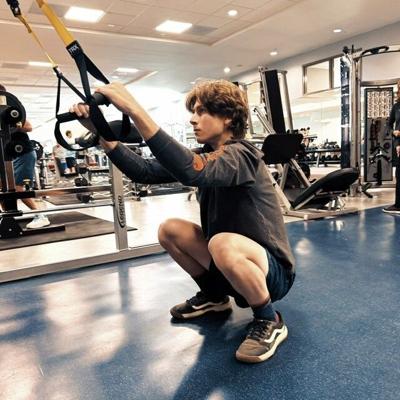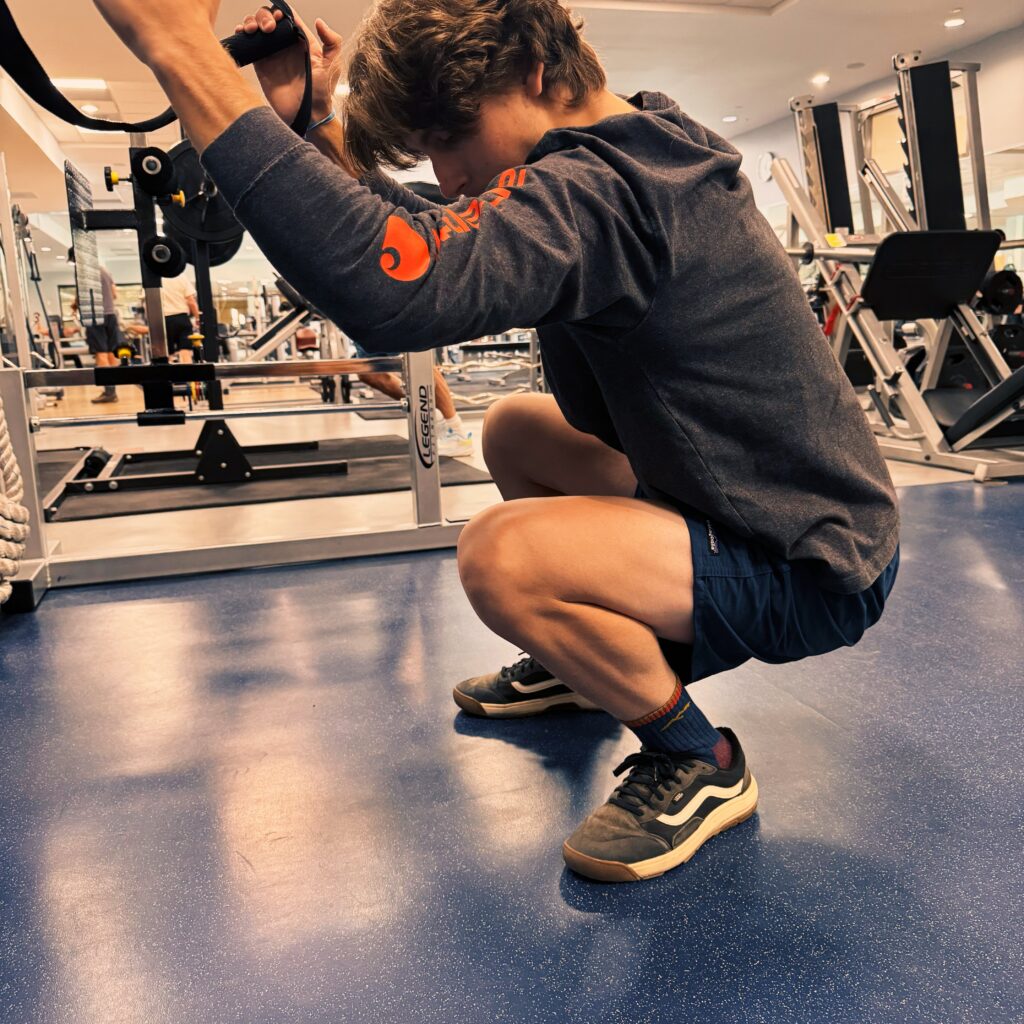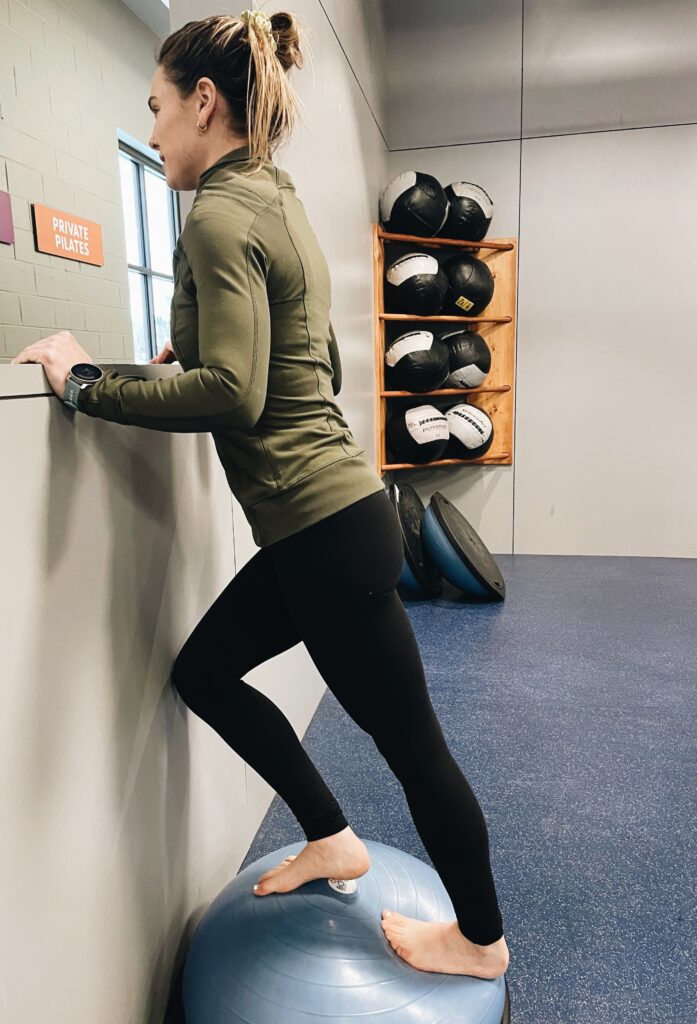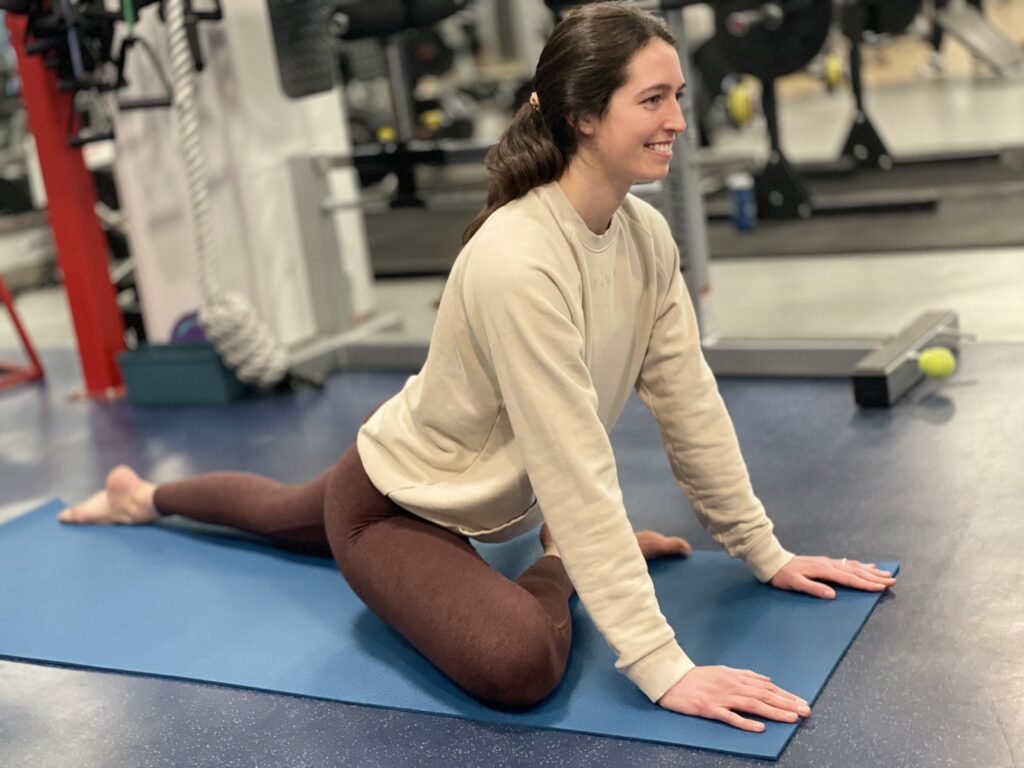
Photo courtesy of Connie Aronson
How easy is it for you to sit in a deep, bodyweight squat? Deep squats are a natural human movement. Knees fully bent, buttocks low to the ground and heels down, it’s a posture still used by people young and old, whether while eating, playing games, socializing or doing household chores. I’m not suggesting giving up chairs, but practicing deep squats on a regular basis is great for your hip mobility and leg strength.
Called the “primal” or “Asian” squat, the position requires hamstring, glute, ankle and hip mobility. Also, the front shin and spine need to be strong enough to hold you in position. For most people with healthy knees, a deep squat can improve the strength of the stabilizing ligaments and soft tissues. If you have problems with your squat depth and range of motion, specific calf and ankle stretches can also be helpful.
In a deep squat, you have to flex your ankles. The front shin needs to move forward over your toes. A limited range of motion in your ankles can affect not only good squatting form, but sports performance and balance. Two big muscles on the back of the leg, the gastrocnemius and soleus, provide movement, and are often tight or stiff. Both of these muscles attach to the heel via the Achilles tendon. These muscles play a big role when you flex your ankles.
The ankles have to bend. Dorsiflexion involves being able to bring the lower leg over the foot. It occurs any time your foot hits the ground. And, of course, in a squat. Using a TRX for assistance and stability, as shown, will help you experience a deeper stretch than you thought possible in both the ankles and hips in the deep squat. With daily practice, you’ll be able to get down on the floor and play with your kids or grandkids, impressing them with your youth!
TRX deep squat mobility warm-up
Hold onto a TRX, set a medium length and sink down into a low squat. Sink, sway and move side to side to open up your hips. Pull your hips both forward and back. Keep your heels down. Perform three to four reps of 20 to 30 seconds before standing up.

Once you are in a deep squat, sink, sway and move side to side to open up your hips & allow the shins to move forward
Best calf stretch (on a BOSU)

Stretching the calf muscle can help the ankle dorsiflex (so the shin comes over the foot)
Photo courtesy of Connie Aronson
Place a BOSU ball against a wall for balance. Stand on the center of the dome with one leg behind you. Push the heel of the back foot down into the BOSU, leg straight, posture erect. Hold for 20 seconds. Move the heel outward 10 degrees and hold the stretch for 20 seconds, then move the heel inward 10 degrees and hold the stretch for 20 seconds. Repeat on the other leg.
Connie Aronson is an exercise physiologist and corrective exercise specialist (TBBM-CES). Visit her at www.conniearonson.com and follow her on Instagram using @conniearon.



